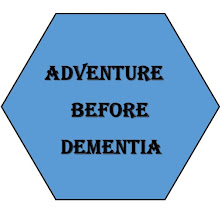The ferry landed at at the little town of Penneshaw; from there we headed to our first stop at Seal Bay, home of the Australian sea lion and one of the largest breeding colonies in Australia. These animals stay out fishing for days at a time and return to this spot to rest and for females to nurse their young. The beach was littered with sleeping sea lions; we kept a safe distance to avoid disturbing them.
Next stop was Vivonne Bay, where we had one of our best meals to date on this trip. There were lots of salads, a choice of grilled chicken or sausage, and fresh fruit with clotted cream for dessert. For our after-lunch entertainment, we watched a presentation of Australian birds of prey - a kestrel, a barn owl, and a wedge-tail eagle were among the rehabilitated animals in the collection. The keeper also had a local favorite, the kookaburra (a type of kingfisher).
On the road again, we saw a group of pink and gray galahs. These birds are common all over Australia; they are a type of cockatoo.
Next we headed into Flinders Chase National Park, which occupies a third of the island. The thick scrub is habitat for many species of wildlife, and the coastline provides some beautiful views in including this shot of Remarkable Rocks.
We stopped for a closer look at Remarkable Rocks, a cluster of granite boulders sculptured by the weather and perched on a granite dome that rises steeply from the ocean. These huge rocks have been carved into weird and wonderful shapes by wind, rain, and ocean spray over many centuries.
Cape du Couedic Lighthouse is one of three lighthouses on the island; it was built over 100 years ago of sandstone blocks. The old lighthouse keepers' cottages are now available for rent as holiday (vacation) homes.
Below the lighthouse, the steep rocks provide a home for a colony of New Zealand fur seals. We could see them sleeping and playing on the rocks below and swimming in calm pools of water.
In the same area, we saw Admirals Arch, a natural arch formed by erosion from the pounding see. Underneath the top of the arch, tree roots dangle through the rocks.
Since we'd been such a delightful group, our driver took us off the prescribed route into a eucalyptus forest in search of koalas. He thought we might find some snoozing up in the trees and he was right - we'd seen these animals several times in parks, but somehow it's different to find them out in the wild.
Late in the day, we made our way to the national park visitors' center - a welcome air-conditioned relief from one of the hottest days in memory. From there our coach headed to the airport, where we boarded a small prop-plane for the short flight back to Adelaide.













